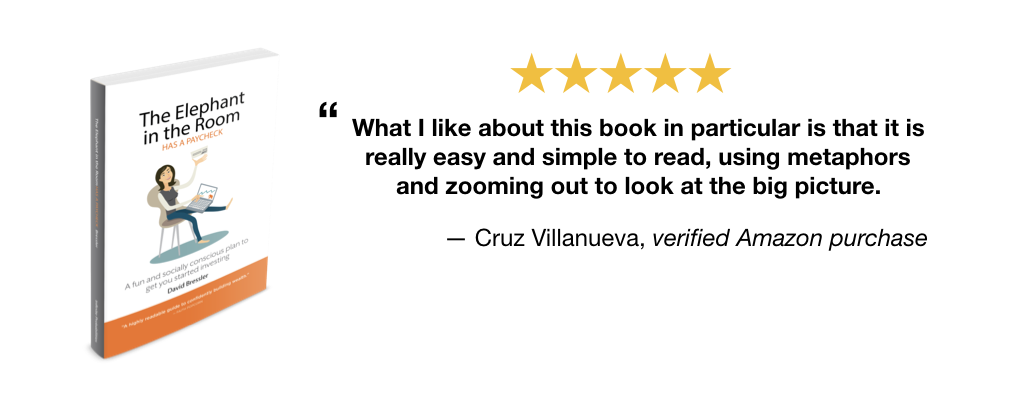It’s interesting that for all the “get started (saving) earlier” messaging we hear from financial companies, there aren’t very many metrics that incorporate the value of having started earlier.
Looking at an investment, you might look at your annual growth or dividend yield to understand your investment at a moment in time. However, we know that a general “start investing so you have money in the future” isn’t so motivating for many. These metrics aren’t enough to get people started. Or, maybe they can get some people started, but not others.
What other metrics can we use to get people thinking about the benefits of starting early?
I like ‘yield on cost’ for doing this (I call this Actual Yield in my book, because ‘yield on cost’ is just too unfriendly).
Yield
Companies that pay a dividend, have a metric called yield. The percentage return of the dividend relative to the current price of a share. So, a $1 annual dividend on a stock that costs $50 is a 2% yield.
Actual Yield
‘Yield on cost’ looks at the dividend yield, but instead of using the current price it uses your actual cost of the stock.
Let’s say you bought that stock at $50 paying a 2% yield of $1/share. Let’s also say the stock doubled over 10 years and doubled its dividend to continue paying a 2% return of $2/share.
A procrastinator would look at both moments in time and think — I’m earning 2% on my money no matter when I invest.
That’s because yield doesn’t account for the 10 years that you’ve already been sticking to your wealth building plan. Yield doesn’t motivate you to stick with it over time.
‘Yield on cost’ presents a different result. You bought the stock at $50/share and now you’re getting a $2 dividend. That $2 dividend is a 4% return on the cost of your investment. That extra 2% (in this case) represents your reward for sticking to your plan over time.
A Real World Example in Apple
I came across a Bloomberg article discussing Berkshire Hathaway’s recent disclosure of a huge purchase of Apple shares. It’s such common thinking to wonder “if you had invested $1,000 in [company X] 10 years ago, how much would you have?”
I believe we need to wonder what your ‘paycheck’ would have been!
In the article it says today’s value of a $1,000 investment back then would be worth $7,111. That looks like the $1,000 purchase would have been for about $39 shares since Apple’s price the day of the article was about $185. So, cost would have been about $25.65 (this is all an estimate anyways, but close enough to make a point).
Well, with a $2.92 dividend, your ‘yield on cost’ would be over 11%… the $1,000 you invested 10 years ago would be earning 11% today, in addition to being worth over 7x more. Your paycheck would be almost $114 — which means in 10 years you’d more than have your whole original investment back.
And, Apple is buying back a lot of shares, which means that if they keep their overall dividend expense consistent they could still raise their dividend about 11% a year. On top of that, they have about $50 billion a year in free cash flow that they like to return to investors (using both buybacks and dividends).
This year’s Apple dividend increase was 16% and there’s no reason to believe that level of dividend growth isn’t sustainable.
Relating this to Retirement
I really feel these sorts of metrics are much more interesting than how much your bank account has grown. While $114 isn’t a lot, what if you had taken $100,000 and invested for retirement, you’d then be getting $11,400 a year in dividends… dividends that can possibly increase 15% a year!
You can spend those dividends (after putting away for taxes) without touching the principle. You can budget to that dividend paycheck in a way that’s difficult to do for a pile of money (without a lot of uncertainty). That’s an awareness about your money that’s easier to understand than trying to guess how to convert a pile of money into a retirement budget.

Let me know what you think